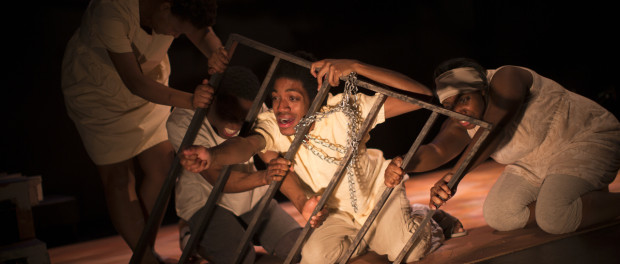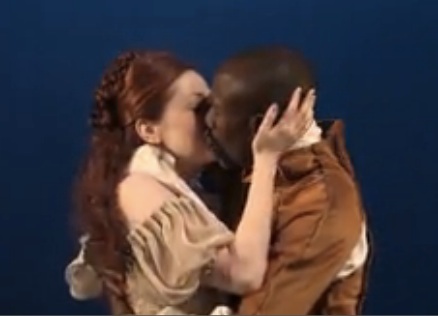Political Theatre Blind Misses Its Weak Spots
Scapegoat Carnival Theatre’s Blind (written by Lindsay Wilson, directed Alison Darcy) is the story of Hannah (Lydia Zadel), an international observer of human rights violations, as she documents the hardships of children with albinism in Tanzania. It follows the formula of every piece of socially conscious theatre before it and borrows the worst clichés of independent theatre.
The first massive cliché, and the main problem with the piece, was Hannah herself. To start, she’s the exact same character as at least three quarters of independent theatre’s female leads. She’s young, naïve, earnest, and nauseatingly sweet. If she’s not wearing something revealing to begin with, you can bet your boots she will be before this play is out. Her eyes go wide when she’s feeling vulnerable, she runs her hand through her hair for frustration, and around three quarters of the way through the play, she’ll shout really loudly because She’s Acting. (Where are these actresses coming from? Does playing theatre’s Everygirl just suck the talent out of them?) While I usually find this character merely boring, in Blind, she was offensively so. Hannah, our main character, was completely unnecessary to the story. The insistence that the story revolve around a young Western female and her saint-like reactions of horror to the events in Tanzania teetered on the verge of being racist. Her doe-eyed, Disney-princess blandness was almost sexist.
With all that time being spent on Hannah, I learned absolutely nothing about the plight of children with albinism in Tanzania. Well, I learned that it exists, but that’s because I read the program –- the play wasn’t even particularly clear on that. Characters alluded vaguely to complex politics and fascinating superstitions, but of course we don’t dwell on them because wouldn’t we all rather see Hannah Being Good With Kids? And this wasn’t a short play – two hours and twenty minutes later, I learned nothing about the issues at stake, except, cue recyclable theatre thesis, that: It’s complicated, and it sucks.
Finally, to top it all off, the left half of the set consisted of the theatre cliché to end all theatre clichés and my personal pet peeve, the junkyard set. In this case, it took the form of a quilt of cardboard and scrap metal, which was half painted over to form a stage. Why? It’s not like this kind of set is easy to make – painstaking effort must have been put into gathering all the material and fixing it together and painting it to make it look junky. Can’t we just let this style die – at least for a while? Let’s give the junkyard set a rest for ten years – then, when it returns, it’ll seem hip and innovative and meaningful. How can we miss it if it will not leave?
You’ll notice I only mentioned the left side of the set – why? Because the set, like the play, was split right down the middle. On the left, an unnecessary cliché, on the right, a gorgeous, atmospheric space, where hanging branches cast their shadows and the glow of yellow light felt like it had been stolen from an African afternoon. While Hannah was soulless and contrived, the other characters were brimming with emotion and depth, each uniquely hypnotic. The soundtrack was absolutely stunning – the actors imitated birdcalls and played on an instrument that I think is called a karimbu. And when they sang together, the air swelled.
I felt that the bad points in Blind were so bad, the good points could not redeem them. The standing ovation, however, suggests that opinions may vary.
Blind is playing at the MAI (3680 rue Jeanne-Mance) from April 3-6 and 11-13. 8 pm weekedays, 3 pm Sunday Matinee. $22/18/15.
On April 11., after the show, keynote speaker Peter Ash from Under the Same Sun will talk about the work being done in East Africa.








